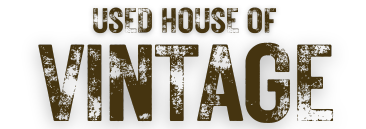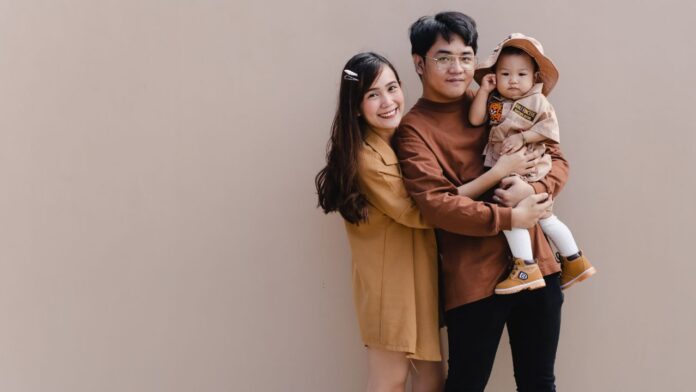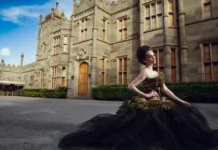Last Updated on July 6, 2025 by Used House Of Vintage
There’s something undeniably sweet about vintage baby clothes. Maybe it’s the soft fabrics. Maybe it’s the delicate lace or hand-sewn details. Or maybe it’s just the charm of dressing your baby in something that feels like it came straight out of a storybook.
If you’ve ever stumbled on an old baby romper at a thrift store or found a hand-me-down gown tucked away in your grandma’s attic, you know what I mean. These aren’t just clothes—they’re little pieces of history.
In this guide, we’re diving deep into everything vintage baby: what it means, where to find it, how to care for it, and how to make it work in today’s world. Whether you’re into retro baby outfits, heirloom baby clothes, or just want something different from the usual fast-fashion stuff, you’re in the right place.
What Are Vintage Baby Clothes?
Vintage baby clothes are outfits made at least 20 years ago. Some pieces date back to the 1940s or even earlier. These clothes have a unique look—think soft fabrics, delicate stitching, and classic styles that aren’t common in stores today.
Definition and Characteristics
Vintage baby clothing often includes christening gowns, embroidered rompers, soft cotton dresses, and hand-knit sweaters. Many pieces are handmade or crafted with high attention to detail. They may feature pintucks, lace trim, smocking, and pearl buttons.
The charm isn’t just in the design—it’s in how well they hold up. Most vintage clothes were made with quality materials like 100% cotton or linen. They feel different, look different, and often last longer.
Difference Between Vintage, Retro, and Antique
Let’s keep this simple:
- Vintage = Usually 20 to 100 years old.
- Retro = New but styled like it’s from the past.
- Antique = Over 100 years old.
So, a 1970s baby dress is vintage. A new romper designed to look like it’s from the ’50s? That’s retro. Something from the 1800s? Antique.
Understanding the difference helps when you shop or sell. Some shops label items incorrectly, so keep an eye out.
Why Choose Vintage Baby Clothes?
Honestly, they just don’t make baby clothes like they used to. And no, that’s not just nostalgia talking. There are real reasons vintage baby clothes are worth it.
Timeless Style and Sentimental Value
Vintage clothes have that sweet, innocent charm. They’re perfect for special moments—family photos, birthdays, holidays. They bring back memories for parents and grandparents too. Wearing a family heirloom or gifting one makes those memories even stronger.
Sometimes it’s about more than looks. Vintage baby clothes feel meaningful. Holding a dress your grandma saved from your mom’s baby days? That’s a big deal.
Sustainability and Eco-Friendly Fashion
Buying vintage is one of the best ways to fight waste. No extra resources go into making something new. You’re reusing something that still has life in it.
And if you’re into organic baby clothes, vintage is a great option. Back in the day, clothes were often made without synthetic dyes or fabrics. So you might actually find a piece that’s more “natural” than what’s labeled organic today.
High-Quality Craftsmanship
A lot of vintage baby clothes were handmade or made in small batches. The seams are stronger. The buttons don’t pop off after one wash. The fabrics breathe better.
Some heirloom baby clothes last through generations. That’s not just luck—it’s better craftsmanship. If you want something that holds up through baby #1, #2, and maybe even a cousin down the line, vintage is a solid bet.
Are Vintage Baby Clothes Safe for Newborns?
This is a question I get a lot, and it’s important. The short answer is: yes—if you’re careful.
Tips for Choosing Safe Vintage Clothing
Start by checking for anything that could be a hazard. That means:
- Loose or tiny buttons
- Frayed fabric or broken seams
- Old snaps or zippers that might scratch
Also, skip anything with metal parts if you don’t know what type it is. Some vintage items may contain nickel or other metals no longer considered safe for babies.
Stick with soft, natural fabrics like cotton or linen. They’re less likely to irritate your baby’s skin. Avoid wool for newborns unless it’s very fine and not scratchy.
How to Clean and Sanitize Vintage Baby Clothes
If it smells like grandma’s attic, you’ll want to clean it right. Here’s what works for me:
- Soak in warm water with baking soda to pull out musty smells.
- Use a gentle, fragrance-free detergent to hand-wash or machine-wash on a delicate cycle.
- Rinse well, maybe twice.
- Air dry flat or hang dry to protect delicate threads.
Skip bleach unless you’re dealing with white-only pieces—and even then, test first. You can also use vinegar to soften fabric naturally.
Where to Buy Vintage Baby Clothes
You’ve got a few great options depending on what you’re looking for and your budget.
Best Places to Shop Online
Etsy is the goldmine. You’ll find everything from handmade vintage baby dresses to full outfits from the ’50s. Look for trusted sellers with reviews and clear photos.
Other good sites:
- eBay (be sure to ask about condition)
- Facebook Marketplace or vintage groups
- Boutique vintage baby clothing shops (some even specialize by decade)
Want something cute without the high price tag? Search for “affordable vintage baby clothes” or “vintage-inspired baby clothes.” You’ll find lots of gems.
Local Thrift Stores and Estate Sales
If you enjoy the hunt, go local. Estate sales are amazing for older items that have been stored well. Bring cash, and ask if they have baby items not on display.
Thrift shops sometimes hide treasures in the back. Dig through the racks—baby clothes are small, so it’s easy to miss something amazing.
Vintage-Inspired Baby Clothes Brands
Not ready to go full-on vintage? No problem. There are some beautiful brands that create vintage-style baby clothes with modern sizing and safe materials. Look for labels that focus on sustainability and classic design.
How to Care for and Restore Vintage Baby Clothes
Keeping these clothes fresh matters. And it’s easier than it sounds.
Washing and Storing Tips
Use cold or lukewarm water and a gentle soap. Hand-wash if possible, especially for lace or embroidery. Never wring them out—just press gently with a towel.
When storing, skip plastic bins. Go for cotton garment bags or acid-free boxes. Always wash and dry completely before packing away.
Throw in a lavender sachet or cedar block to keep moths away. Works like a charm.
Repairing and Restoring Heirloom Pieces
Loose seams? Learn a simple backstitch. Broken buttons? Replace with vintage-style ones from craft stores or Etsy.
If something’s really delicate or torn, consider taking it to a seamstress. Some shops specialize in restoring heirloom baby clothes and can work wonders.
How to Style Vintage Baby Outfits Today
Honestly, this is the fun part.
Mixing Vintage with Modern Pieces
You don’t have to dress your baby head-to-toe vintage. Mix a vintage bonnet with a modern onesie. Pair retro baby outfits with new leggings. It creates balance and keeps things practical.
Just make sure the old piece is comfortable. Don’t use stiff collars or tight waistbands on babies who want to crawl around all day.
Dressing for Special Occasions
Vintage baby clothes shine at birthdays, baptisms, or family portraits. A lace-trimmed dress or knit sweater instantly adds charm. Throw in a soft blanket or bonnet for even more old-school cuteness.
Take photos—trust me, you’ll want to look back.
Everyday Vintage-Inspired Looks
Some pieces work for daily wear. Think bloomers with soft cotton tops, or old-school overalls. Go for things that snap easily and feel soft. Babies wiggle. Don’t fight that.
Vintage Baby Clothes Patterns and DIY Ideas
Got a sewing machine? You’re in luck.
Where to Find Vintage Baby Clothing Patterns
You can find vintage patterns online for cheap—or free. Search Etsy, Pinterest, and sewing blogs. Some vintage baby clothes patterns are scanned from old magazines. They’re usually simple and beginner-friendly.
Look for terms like:
- Baby romper pattern
- 1940s baby dress pattern
- Heirloom baby sewing pattern
Sewing Your Own Vintage-Inspired Outfits
Use cotton or muslin for a soft touch. Linen works too, but keep it lightweight. Use snaps instead of buttons for easier changing.
If you’re new to sewing, start with a basic bloomer or bonnet. You can even hand-stitch it if you’re patient.
Bonus tip: upcycle old adult shirts into tiny outfits. It’s eco-friendly and kind of adorable.
FAQs About Vintage Baby Clothes
Are vintage baby clothes worth the investment?
Yes, especially for special occasions or heirloom gifting. They hold sentimental and monetary value.
How can I tell if vintage baby clothes are authentic?
Check tags, stitching, and fabric type. Older pieces may have faded tags or no tags at all.
What’s the best age range for vintage baby clothes?
Any age, but many pieces are sized 0-12 months. Always double-check measurements.
Can vintage baby clothes be passed down?
Definitely. With good care, they can last through generations.
Is it safe to use vintage baby clothes as toys or decor?
Yes, just make sure they’re clean and don’t have choking hazards.
Final Thoughts: Embracing the Charm of Vintage Baby Clothing
Vintage baby clothes bring more than style. They carry memories, value, and a sense of purpose. Whether you’re building a collection, dressing your baby for a big day, or just want something different, these pieces deliver.
And hey, you don’t have to go all-in. Try one piece. Mix it with modern stuff. Make it fun. If it feels good, do more.
Your baby might not remember what they wore—but you definitely will.
Ready to get started? Check out your local thrift shop, browse online, or try sewing something yourself. Vintage baby clothes are calling!




